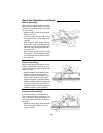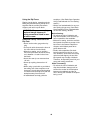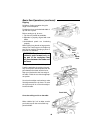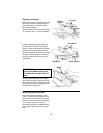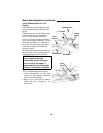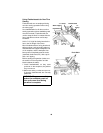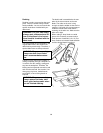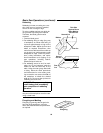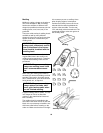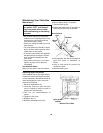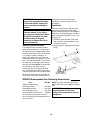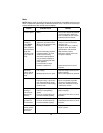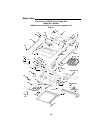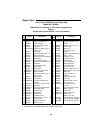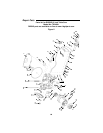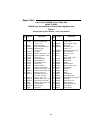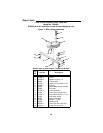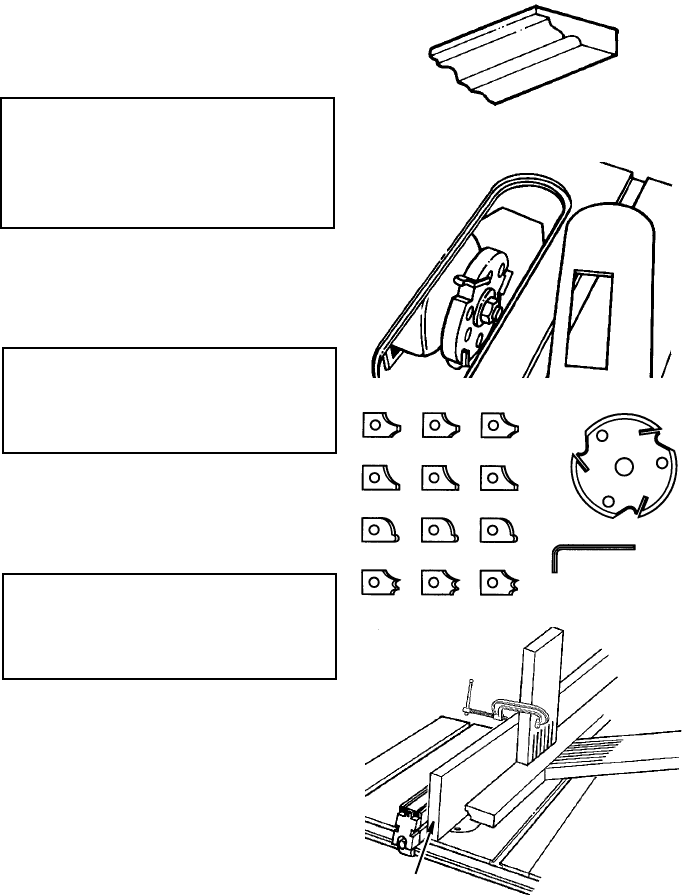
53
Molding
Molding is cutting a shape on the edge or
face of the workpiece. With a molding
head and a selection of different knife
shapes it is possible for almost any kind of
molding (base, cove, bead, etc.) to be
produced.
There are a wide variety of molding heads
available as well as many different
shapes of knives. Be sure and consult the
specific instructions included with your
molding head.
WARNING: For your own safety;
always read, understand, and fol-
low all directions in the instruc-
tional booklet furnished with the
molding head.
The slot provided for the sawblade in the
regular table insert is too small for the
molding head to pass through. Therefore,
a special dado/molding insert must be
purchased.
WARNING: For your own safety,
always use molding insert listed
under recommended accesso-
ries.
When using the molding head it will be
necessary to remove the blade guard and
spreader. Use caution. Use miter gauge,
fence, featherboards, push sticks or fence
facing board, etc., as required.
WARNING: For your own safety,
always replace the blade, table
insert, guard and spreader when
you are finished molding.
A typical molding head is shown, The var-
ious shapes of knives are fitted into
grooves in the cutterhead and secured
with a screw(s).
The molding head is assembled to the
saw arbor in the same manner as the saw
blade. It is not necessary to install the out-
side loose collar before screwing on the
arbor nut. Make sure the arbor nut is tight.
It is necessary to use an auxiliary fence
when shaping edges of a workpiece.
Position the auxiliary fence over the cut-
terhead with the cutter head below the
surface of the saw table. Turn the saw
“ON” and slowly raise the cutterhead. The
cutterhead will then cut its own groove in
the auxiliary fence.
Molding
Auxiliary Fence



